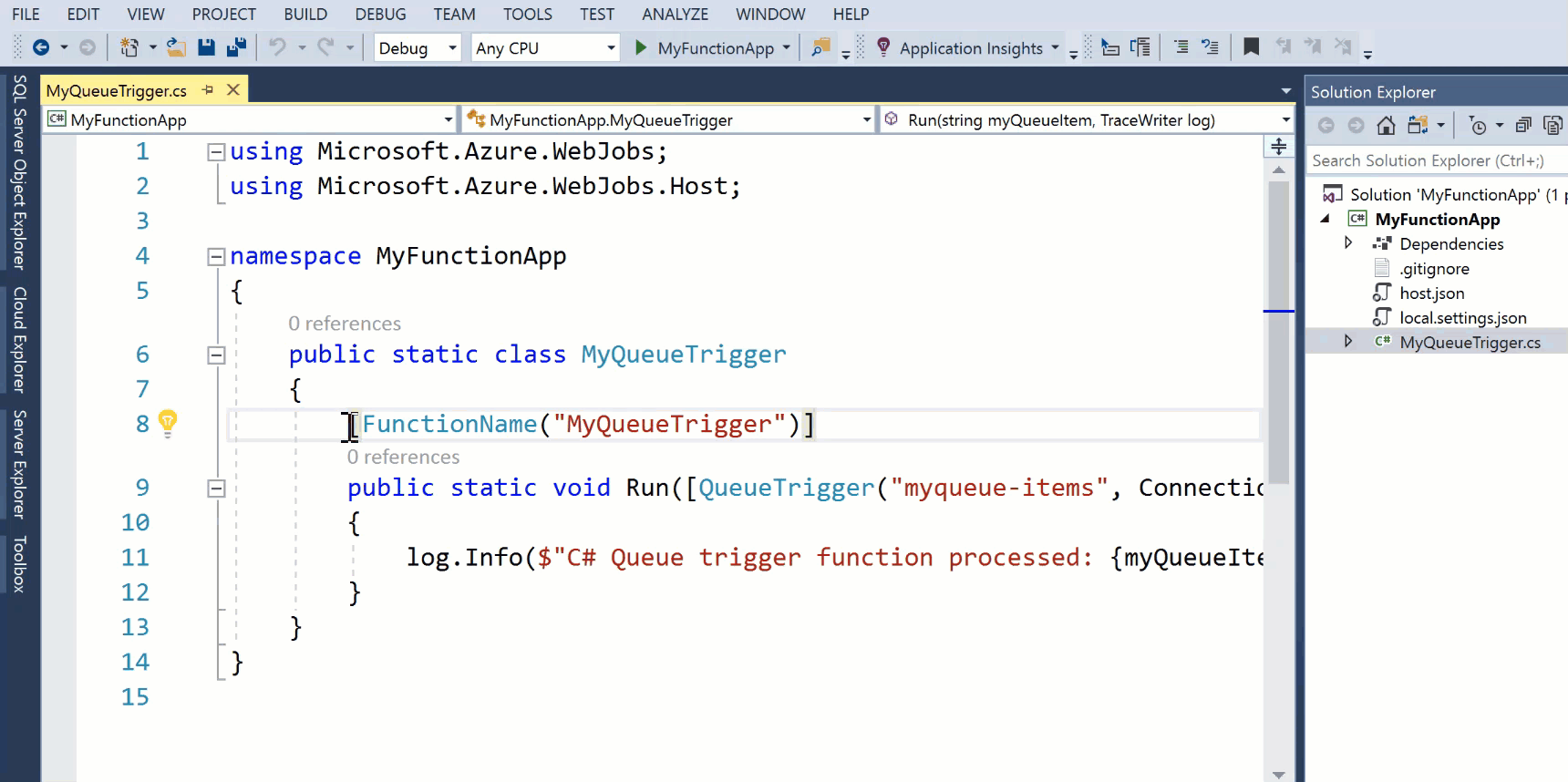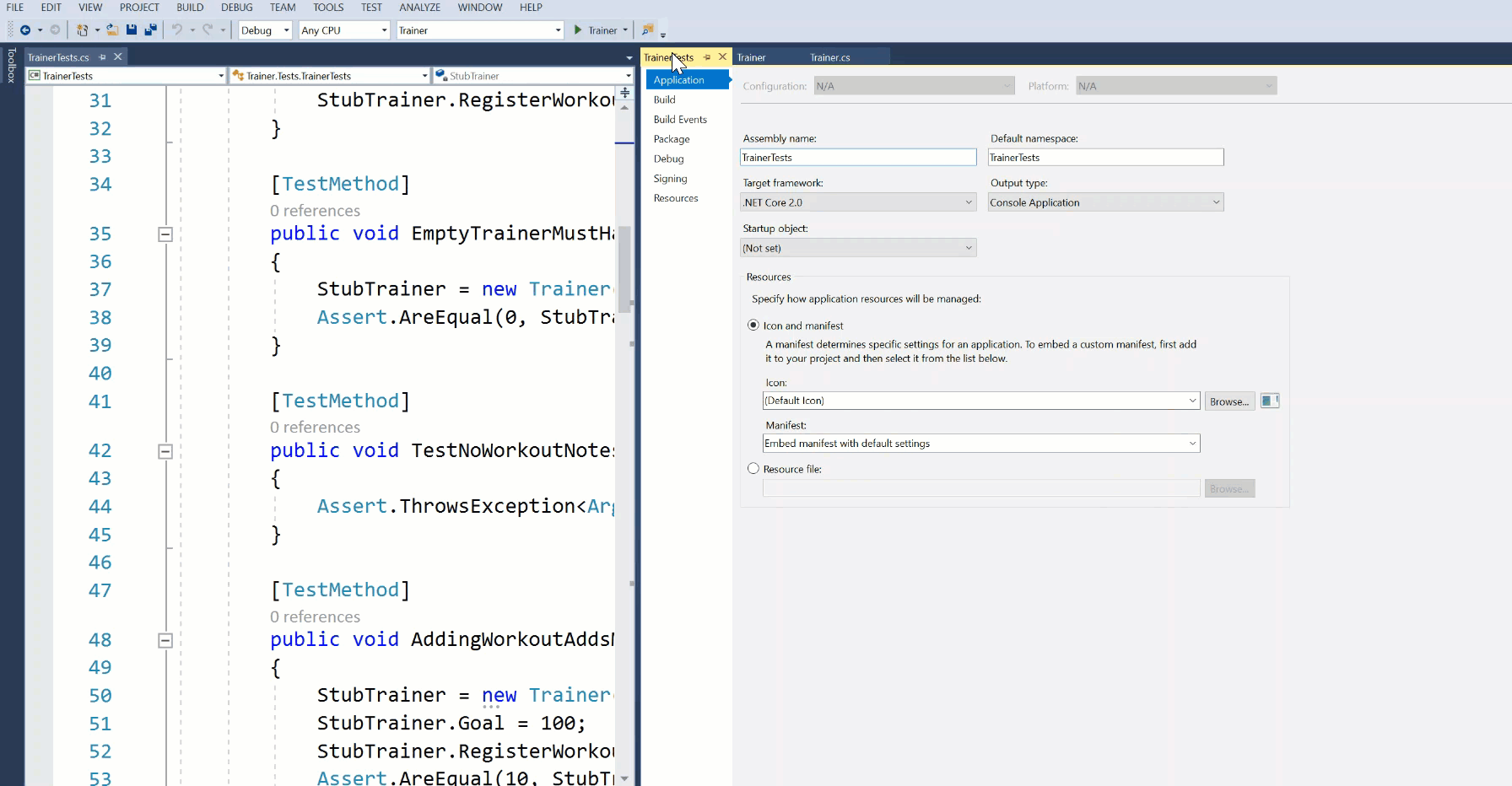Visual Studio 2017 Version 15.3 Released
We are looking to improve your experience on the Visual Studio Blog. It would be very helpful if you could share your feedback via this short survey that should take less than 2 minutes. Thanks!
Today we have several releases to talk about: there’s the release of Visual Studio 2017 version 15.3, the release of .NET Core 2.0, and a release of Visual Studio for Mac version 7.1. We’ll talk about them briefly in that order, but as always, there’s a lot more information in the release notes for each product. If you’d like to jump right in, download Visual Studio 2017 version 15.3, download .NET Core 2.0, and download Visual Studio for Mac. You can also access the latest Visual Studio 2017 product releases through an Azure virtual machine where we offer the recommended installation of the most popular workloads and components.
Visual Studio 2017 version 15.3
For Visual Studio 2017 version 15.3, we focused on improving accessibility, particularly using Visual Studio with the most popular screen readers. We made over 1,700 improvements and still have some work to do, but if you are using Visual Studio 2017 in a low-vision or no-vision mode, a lot has improved. Dante has a blog post on everything we’ve done and what’s more to come, but here I’ll call out a couple of the more major things we’ve improved.
- Debugging is much more accessible. Debugger windows like the Call Stack, Locals, Autos, and Watch windows were inaccessible to screen readers. That’s now fixed.
- The VS editor’s text adornments let developers know about features available at particular points on a line of code, such as breakpoints, lightbulbs, and error and warning “squiggles.” Customers can now discover and navigate between these adornments via the new “Show Line Annotations” command set, which you can find on the editor context menu.
In addition to accessibility, we have many fixes for reliability issues to improve performance, many of which you reported through report-a-problem. Here are some of the more notable ones that had high votes that we fixed:
- A crash that could occur in C# and VB projects when editing linked files, files in Shared Projects, or files used in projects targeting multiple runtimes.
- A race condition when debugging C# or VB projects that could cause Visual Studio to crash when ending the debugging session.
- A crash in C# or VB projects when malformed metadata is encountered in the code file.
- A crash that could occur when compiling a local function in C#.
We also improved many other experiences:
- Azure Functions Support. We added the tools for developing C# Azure Functions to the “Azure development” workload. The main feature change is that this update enables you to create pre-compiled C# Azure Functions, which start faster than script-based functions. For details see the Visual Studio 2017 Tools for Azure Functions blog post.
- Broad Azure sign-in support. VS 2017 15.3 also supports logging into not just Azure, but Azure Government and Sovereign cloud offerings, and Azure Stack.
- Improved container support. This release now supports the breadth of container development across existing .NET Framework apps with Windows Containers, to .NET Core with Windows, and Linux Support. Recent additions include support for your .NET Core applications in containers running Nano Server, as well as debugging improvements for .NET Framework applications in containers.
- Continuous Delivery Tools now included. We’ve moved the Continuous Deliver tools extension into the main product. You can configure continuous delivery for ASP.NET and ASP.NET Core projects targeting Azure App Service. This tooling will configure your continuous integration build using Visual Studio Team Services and configure your deployment to Azure App Service. Once configured, you can modify and extend the build and deploy process, customizing it to meet your exact needs.
For the full list of improvements check out the release notes for Visual Studio 2017 version 15.3.
.NET Core 2.0 Released
.NET Core 2.0 is also released today. This is the second major version of .NET Core and this release focuses on performance improvements and expanding the set of APIs available via .NET Standard 2.0. It includes the runtime and libraries for .NET Core as well as the tools for building, debugging and running .NET Core applications. There are some notable changes from .NET Core 1.1. There’s a full blog post on .NET Core 2.0, but here are some highlights:
- Live Unit Testing. You can use Live Unit Testing for .NET Standard, .NET Core, and ASP.NET Core projects. (Visual Studio Enterprise SKU only)
- References. You can now refer to .NET Core/.NET Standard libraries from .NET Framework projects and vice versa. No need to manually add interop NuGet packages – Visual Studio does this for you automatically.
- Containers with .NET Core and Nano Server. Support for containerizing ASP.NET Core apps as Nano Server images has been added and you can now select Nano Server as the container platform. You can do this under File->New Project for ASP.NET Core projects. For your existing projects, it can be added using the Project Context Menu.
- Support in Visual Studio for Mac. VS for Mac supports building .NET Core 2.0 applications, including libraries, console apps, as well as web applications and services with ASP.NET Core.
Note that the .NET Core 2.0 SDK needs to be installed via a separate download to enable .NET Core 2.0 development in Visual Studio 2017 version 15.3. You can get it at www.dot.net/core. Visual Studio enables side-by-side support of multiple .NET Core SDKs. This also means you can experiment with the latest daily build of the .NET Core SDK, while also developing with the latest public releases. See blog post for details.
Watch the .NET team demonstrate the new features of .NET Core, Visual Studio 2017 and Visual Studio for Mac! Learn what’s new and how to use the new tools.
Visual Studio for Mac version 7.1
Visual Studio for Mac version 7.1 is also available today. It adds support for .NET Core 2.0 targeting in console apps, web apps, and web services. It also enables creating .NET Standard 2.0 in library projects, to share more code across projects. Like Visual Studio 2017, a lot of the improvements in this update center on reliability. We’ve made strides in decreased memory usage, better performance, and decreased crashes. Many of these fixes have been made possibly by your feedback, so please keep that coming through the Developer Community.
Share Your Feedback
As always, we welcome your thoughts and concerns. For issues, let us know via the Report a Problem tool in Visual Studio. You’ll be able to track your issues in the Visual Studio Developer Community where you can ask questions and find answers. For suggestions, share with us through UserVoice.



 Light
Light Dark
Dark
0 comments